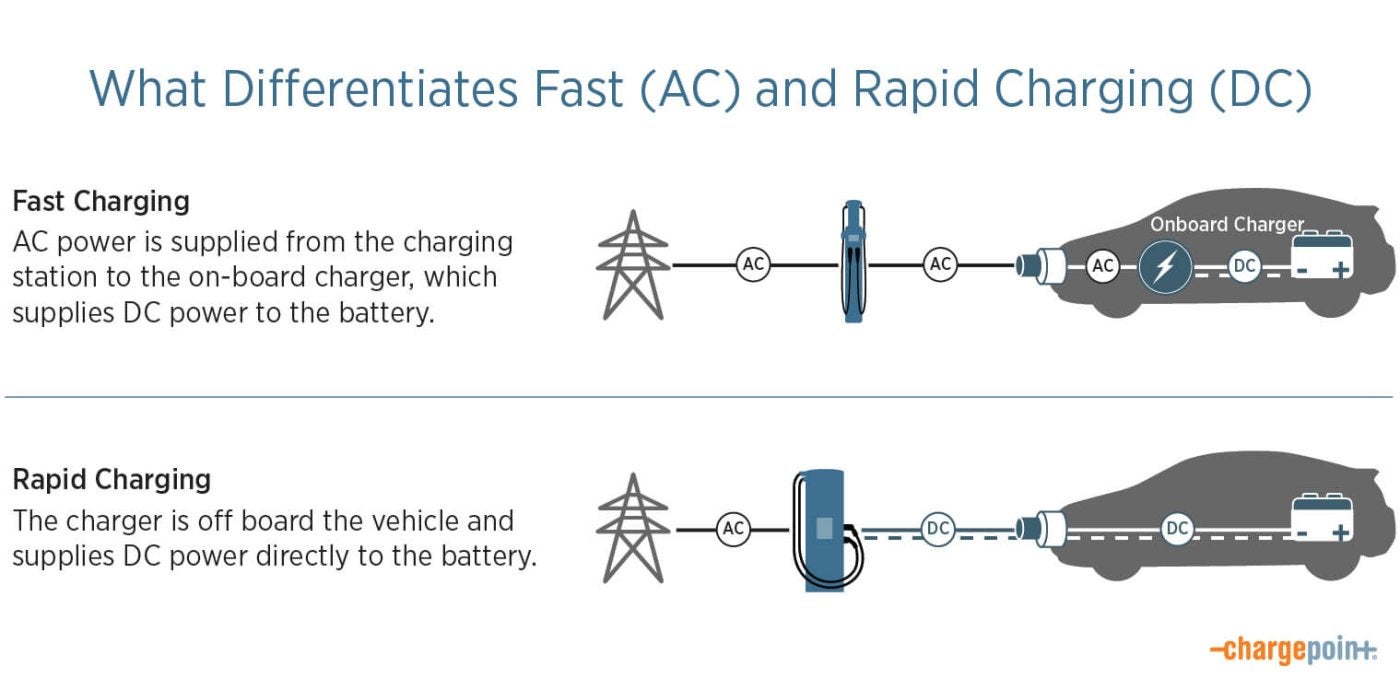
E-mobility is becoming mainstream
Part of what’s giving so many people the confidence to make the switch to electric transportation is the widespread development of AC fast charging and DC rapid charging infrastructure at shopping centres, multi-family properties, parking facilities and along motorways.
But what are the differences between the two types of charging? It has to do with how electricity from the grid makes its way to an EV’s battery. The power from our energy grid is alternating current (AC), and most power outlets use AC power. Batteries, on the other hand, use direct current (DC) power. When charging an EV, the AC power from the grid must be converted to DC power so it can be stored in the vehicle’s battery.

What’s the deal with slow charging?
Some drivers may still use slow charging cables at their homes. These require only a 120-volt, 20-amp circuit, which means you can simply plug them into a normal household outlet and connect to an EV at the other end. Slow charging speed depends on the type of EV (all-electric or plug-in hybrid), the size of the battery and how much energy the battery has in it. For example, an EV with a 100-miles battery plugged into a slow charging cable can take about 24 hours to fully charge when it’s nearly empty.

When to choose AC fast charging
- At work or at home. AC fast charging stations are great for when you park your car in one spot for more than two hours. EVs can reach a full charge from an AC fast charging station in just a few hours or overnight, depending on the vehicle type and battery size.
- While running errands. These charging stations can provide up to 25 miles of range per hour (RPH), which makes them convenient for use while shopping or dining. Since most people run errands within 20 miles of their home, even a brief top-off can provide enough juice to get you to the next stop.
When to choose DC rapid charging
- On a road trip. DC rapid stations can charge an EV to 80% in as little as 20 minutes, making DC rapid chargers a great choice during extended journeys when you want to refuel and get back on the road quickly.
- When you’re in a real hurry. If your battery is very low and you need to get somewhere quickly, DC rapid charging can be a lifesaver.
- When driving a fleet vehicle for work. To keep vehicles charged up around the clock, DC rapid stations allow fleet drivers to charge up quickly in depots or at public stations along driving routes.

Why faster is not always better
- It’s more expensive. Because DC rapid stations require more power supply, they are more expensive for station owners to operate. These costs are passed on to drivers in the form of higher charging fees.
- It can impact your battery’s lifespan. A lot of power flows from a DC rapid charger, and managing it puts extra strain on some EV batteries — potentially reducing the battery’s efficiency and overall lifespan.
- Not all EVs can take a fast charge. Not all EVs come with a DC rapid charging port, so some drivers will not be able to use them at all. This limitation will likely disappear as car manufacturers evolve their standards.
Get more detail on DC how rapid chargingworks.

